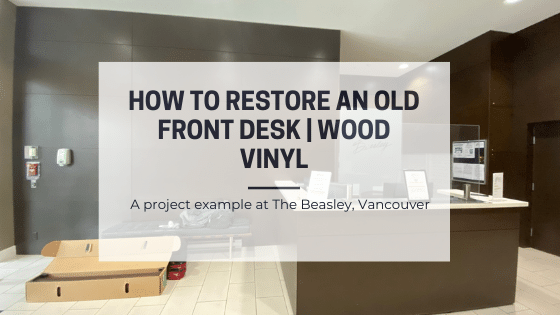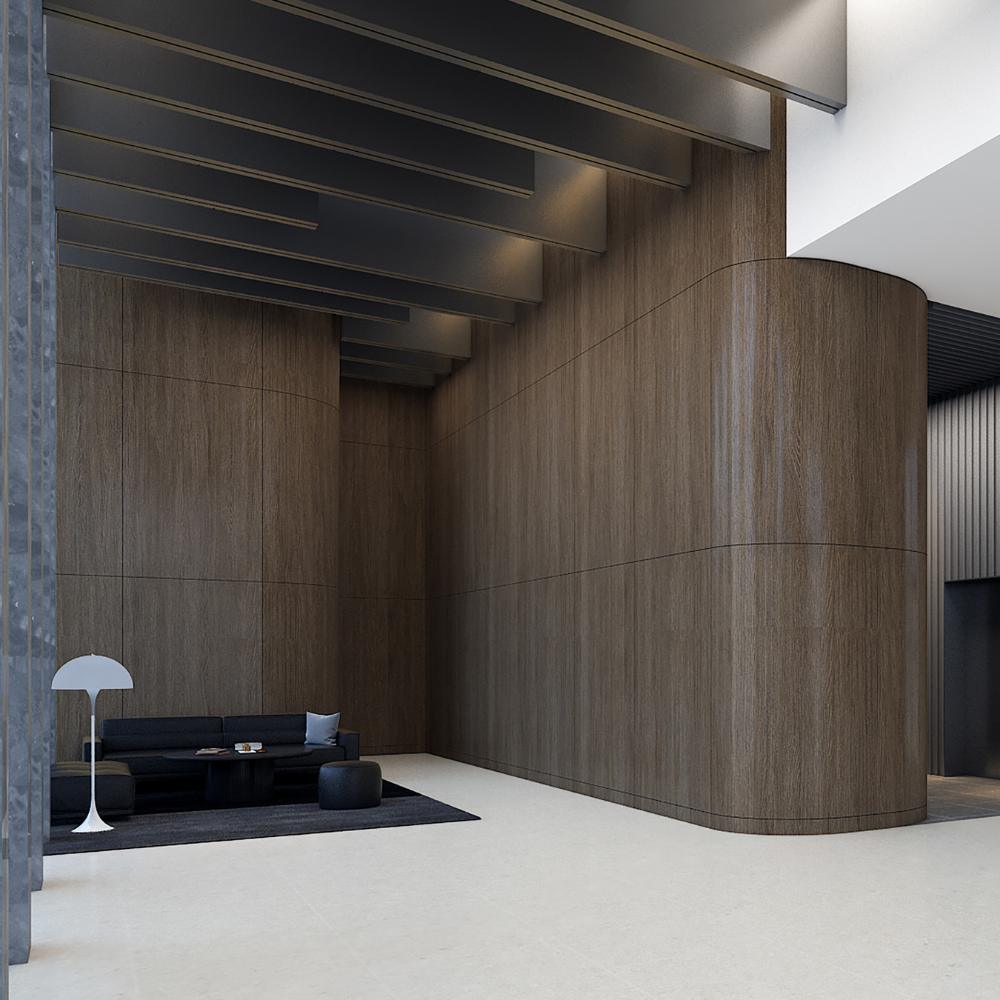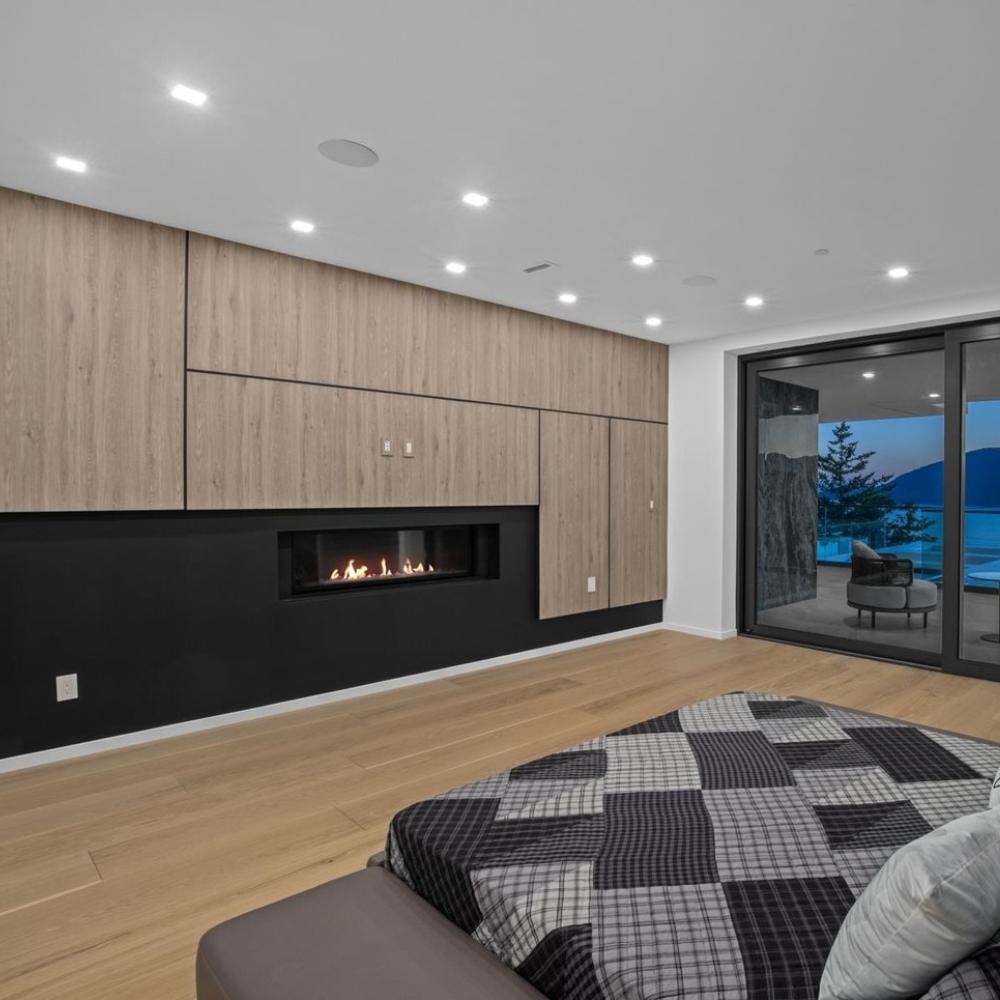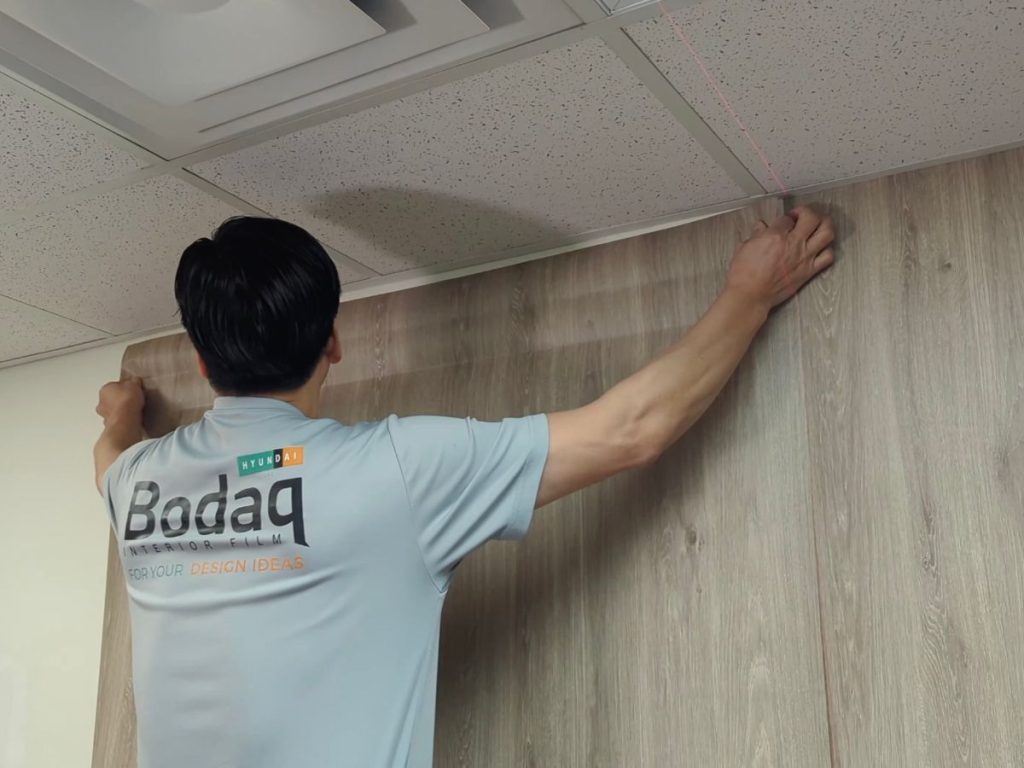Wood vs Interior Vinyl Film
Table of Contents
When it comes to adding warmth and elegance to our living and working spaces, wood surfaces have always been a top choice. However, with growing concerns about sustainability and environmental impact, many are seeking alternative solutions. Discover interior vinyl films, a revolutionary technology that offers the same beauty and charm of real wood but with added benefits for both our planet and our wallets.
In this blog post, we will compare natural wood and interior vinyl films, highlighting the sustainability, longevity, texture, and cost-effectiveness of vinyl films, while still providing the cozy ambiance that wood lovers cherish.
Environmental Impact and Sustainability: Wood vs Vinyl Finish
Wood Sustainability:
The demand for wood has led to extensive deforestation, causing irreversible damage to our planet’s ecosystems. While wood is biodegradable, its extraction and production contribute significantly to carbon emissions.
Vinyl Film Sustainability:
Interior films present a sustainable alternative, as they require no trees to be cut down. By choosing vinyl over wood, individuals can actively participate in forest preservation and contribute to a healthier environment for future generations. Modern manufacture processes significantly reduced environmental impact.

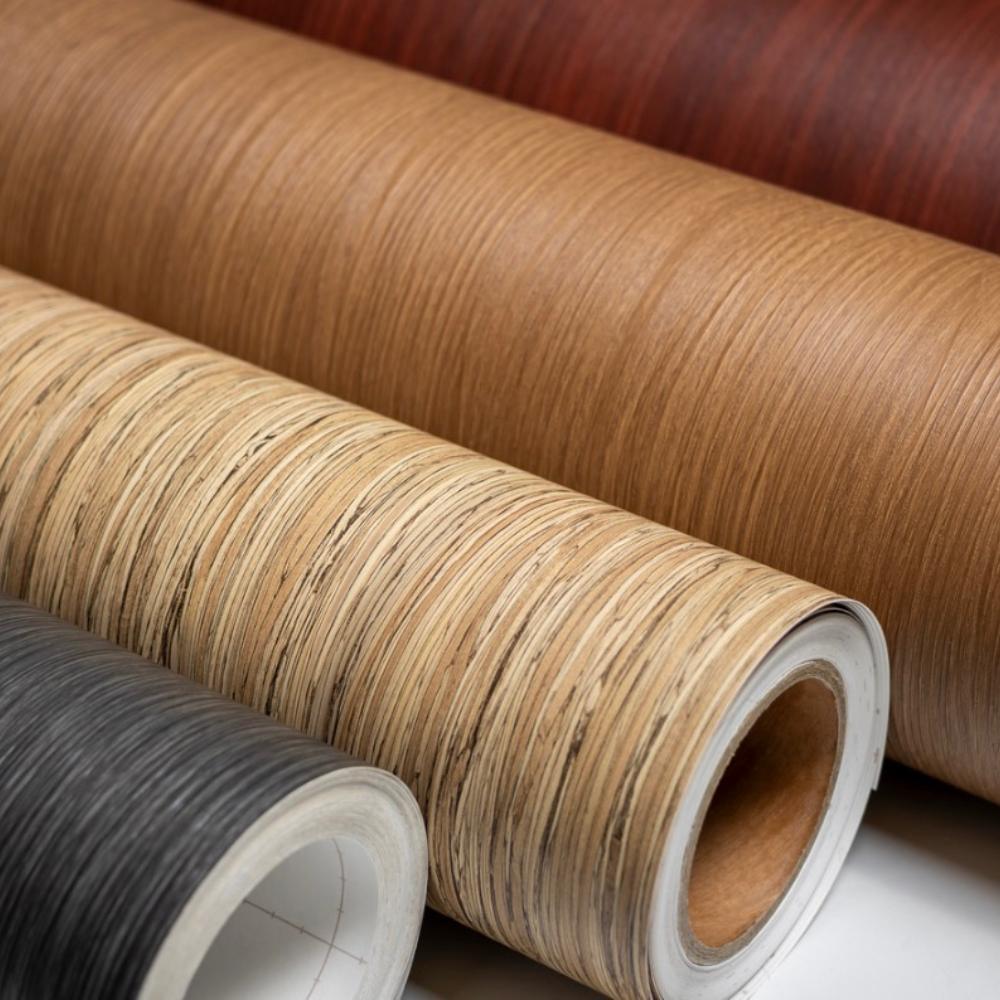
Longevity: Wood vs Vinyl Finish
Wood Longevity:
Over time, wood surfaces may show signs of wear, fading, or scratches, necessitating frequent refinishing or replacement. To prevent damage, the wood can be varnished, but then its appearance and texture change.
Vinyl Film Longevity:
Vinyl films are designed to withstand the test of time, boasting excellent durability and resistance to scratches and fading. By applying vinyl films to various surfaces, homeowners and businesses can enjoy elegant wood patterns without the need for constant maintenance or replacement.
Vinyl can be damaged by cutting the surface, but it’s possible to patch without changing the look.


Cost-Effectiveness: Embracing Warmth Without Breaking the Bank
Wood Cost-Effectiveness:
Natural wood surfaces often come with a hefty price tag, including the costs of raw materials, labor, and finishing products. This can make the dream of having wood surfaces unattainable for many.
Vinyl Film Cost-Effectiveness:
Vinyl films provide a budget-friendly solution without compromising on aesthetics. We offer a vast selection of over 200 BODAQ interior film wood patterns. The films allow individuals to achieve the wood-inspired look they desire at a fraction of the cost of real wood.


Versatility: Wood vs Vinyl Films
Wood Versatility:
Wood is a versatile material in its own right, offering a wide range of applications in interior design. It is commonly used for furniture, flooring, cabinetry, wall paneling, doors, and ceilings. Wood can be crafted and customized into various shapes, sizes, and styles, making it suitable for both traditional and modern design aesthetics. However, working with wood to achieve complex shapes or curved surfaces may require advanced carpentry skills and can be more time-consuming.
Vinyl Films Versatility:
The versatility of vinyl films knows no bounds. They can be applied to a wide range of surfaces, including cabinets, counters, walls, furniture, doors, ceilings and more. This flexibility allows to wrap both flat and curved surfaces. Vinyl films are designed to be pliable and conform to different shapes, which means they can transform not only flat panels but also rounded or irregular surfaces without the need for significant effort or specialized tools.


Advantages of Interior Vinyl Film Versatility:
a. Ease of Application
Applying vinyl film is generally simpler and quicker compared to working with wood. It requires minimal tools and expertise, making it accessible to DIY enthusiasts as well.
b. Cost-Effective Solution
Vinyl films can provide a cost-effective alternative to achieving various decorative effects that may be more expensive or challenging to achieve with real wood.
c. Range of Styles and Designs
Vinyl films come in a vast array of colors, patterns, and textures, allowing for a diverse range of design possibilities to suit different interior themes.
Advantages of Wood Versatility:
a. Natural Beauty
Wood offers a unique and timeless appeal with its natural grains, textures, and warmth that can add character and charm to any space.
b. Longevity
High-quality wooden surfaces, when well-maintained, can withstand the test of time and remain durable for decades.
c. Enhanced Property Value
The use of real wood in interior design can often increase the value of a property due to its perceived quality and elegance.
Authenticity: Wood vs Vinyl Finish
Wood Authenticity:
The authenticity of natural wood is unparalleled. Each piece of wood has its unique character, ensuring that no two surfaces will be exactly alike. The natural variation in grain and color adds to the charm and character of wood surfaces.
Vinyl Films Authenticity:
While vinyl films do an impressive job of replicating wood textures, they are still synthetic imitations. Although advancements in printing technology have made vinyl films look incredibly realistic, there might be subtle differences when compared side by side with real wood, and adding features like fire-retardancy and waterproofness.


Conclusion: Choosing the Right Finish for Your Space
In the end, whether you opt for the authentic beauty of wood or the versatile mimicry of vinyl films, the decision comes down to what best suits your specific needs and preferences.
Embrace the Timeless Charm of Wood: If you value the warmth, natural variations, and enduring elegance that only real wood can provide, investing in wood finishes will undoubtedly enhance your space with a touch of authenticity and luxury.
Discover the Flexibility of Vinyl Films: On the other hand, if budget considerations, design flexibility, and easy application are your priorities, interior vinyl films offer a wide range of possibilities to transform your surfaces without compromising on style.
Whichever option you choose, it’s essential to weigh the pros and cons, consider your design goals, and factor in maintenance requirements to make an informed decision. Both wood and vinyl finishes have their unique advantages and can bring beauty and character to your home or commercial space.
Ultimately, the perfect finish is the one that resonates with your personal taste, fits seamlessly into your interior design vision, and adds that special touch to make your space truly your own. So go ahead and explore the world of wood and vinyl finishes to find the ideal match for your project. Happy decorating!
Wood vs. Vinyl Finishes – FAQ
Wood finishes are coatings applied to wooden surfaces to enhance their appearance, protect them from moisture and wear, and bring out the natural grain of the wood. These finishes can include varnishes, stains, oils, or lacquers. On the other hand, vinyl finishes are synthetic coatings typically made from polyvinyl chloride (PVC) and are designed to mimic the look of wood. They are applied to various surfaces, such as walls, floors, and furniture, to provide a wood-like appearance without the use of real wood
Yes, wood finishes generally offer a more authentic and natural appearance compared to vinyl finishes. Wood grains and patterns are unique to each piece of wood, and this natural variation gives wooden surfaces a timeless and organic look. While vinyl finishes have improved in replicating wood patterns, they may not completely capture the genuine warmth and character of real wood.
In terms of durability, vinyl finishes tend to be more robust and resistant to moisture, scratches, and general wear and tear compared to wood finishes. Vinyl is highly water-resistant, making it suitable for areas prone to moisture, like bathrooms and kitchens. Wood finishes can be durable too, but they require proper maintenance and may be more susceptible to damage from water, scratches, and exposure to UV light.
From an environmental perspective, wood finishes, when sourced from sustainably managed forests or reclaimed wood, can be more eco-friendly. They come from renewable resources and, if responsibly harvested, can have a lower carbon footprint. Vinyl finishes, being synthetic and petroleum-based, have a more significant impact on the environment during their production. Additionally, vinyl materials are not biodegradable, which can contribute to environmental pollution.
When it comes to comfort, wood finishes often have a warmer and more inviting feel compared to vinyl finishes. Wood has natural insulating properties, which can create a cozier atmosphere in a room. On the other hand, vinyl might sometimes (but not always) feel colder to the touch, especially in colder climates. However, the comfort aspect might be subjective and could depend on personal preferences.
Feeling inspired?
We offer professional installation of BODAQ Interior Film.
Feel free to contact us for a FREE QUOTE
EXPLORE
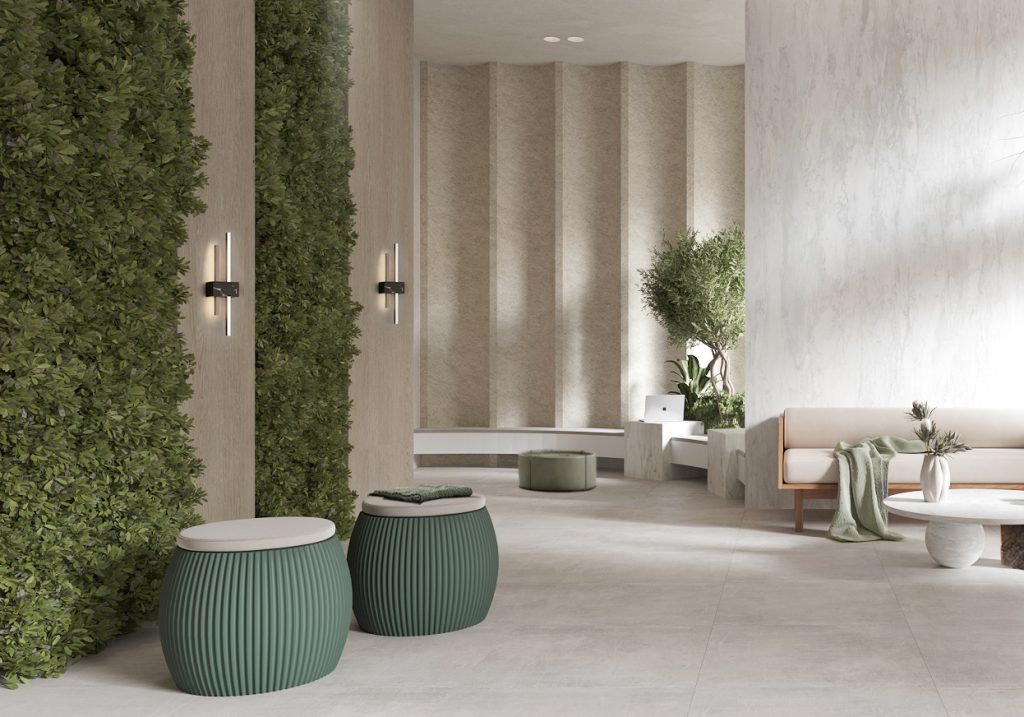
How to Use Interior Film to Create Flexible Zones in Open Spaces

Bodaq Interior Film: Where to Buy and Why Choose Nelcos

Golden Elevator Panels: A Stylish Decision for One Building

Introducing Bodaq Architectural Finish

This Month at Nelcos: Events of June 2022
